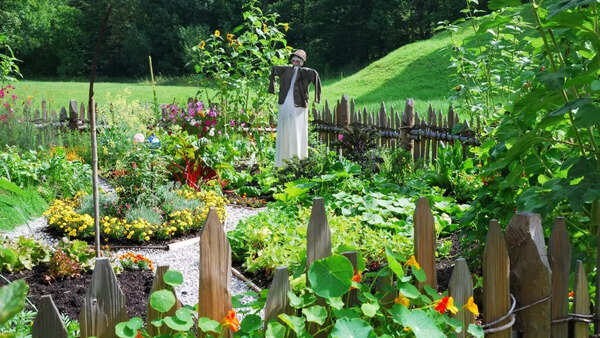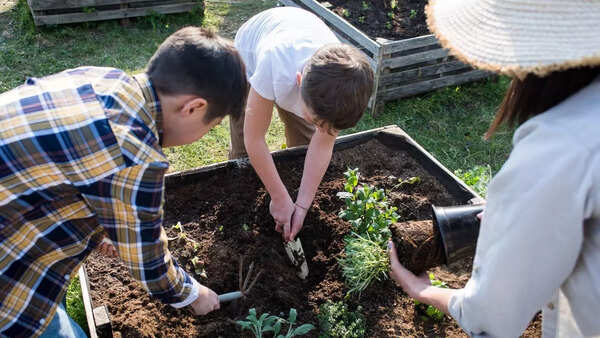The monsoon season revitalizes the earth, replenishing water sources and providing relief from the summer heat. For gardeners, it's nature's signal to cultivate. Abundant rainfall, softened soil, and mild temperatures create an ideal environment for establishing a thriving kitchen garden.
Whether you are a seasoned gardener or just starting out, the rainy season allows you to grow your own food. As the rains nourish the soil, expect your garden to burst with vibrant greens, crisp vegetables, and colorful flowers. Take this opportunity to reconnect with nature, engage in hands-on gardening, and experience the satisfaction of nurturing life from seed to harvest.

The monsoon season offers several advantages for starting a kitchen garden:
To ensure success, prioritize proper drainage to prevent waterlogging, which can harm plant roots.
Follow these steps to create a flourishing kitchen garden during the monsoon season:

Monsoon rains naturally soften compacted soil, making it easier to till and aerate. To further enrich the soil, incorporate organic compost, farmyard manure, or leaf mold. These amendments decompose rapidly in moist conditions, releasing essential nutrients such as nitrogen, phosphorus, and potassium.
For an additional boost, consider adding natural additives like neem cake or bone meal to enhance nutrition and pest resistance. Before planting, test the soil's drainage by observing how quickly water absorbs into a small hole. If you have clay-heavy soil, mix in cocopeat or coarse sand to improve aeration and prevent waterlogging, which is vital for healthy root development.
Newer articles
Older articles
 Moto G54 Gets Significant Price Cut in India, Making Budget Smartphone Even More Appealing
Moto G54 Gets Significant Price Cut in India, Making Budget Smartphone Even More Appealing
 Africa's Rift Valley: Mantle Upwelling Drives Continent's Split and Birth of New Ocean
Africa's Rift Valley: Mantle Upwelling Drives Continent's Split and Birth of New Ocean
 X Cracks Down: Over Half a Million Indian Accounts Suspended for Policy Breaches
X Cracks Down: Over Half a Million Indian Accounts Suspended for Policy Breaches
 Vijay Sethupathi Apologizes Amid Controversy Over Son Surya's Debut Film 'Phoenix'
Vijay Sethupathi Apologizes Amid Controversy Over Son Surya's Debut Film 'Phoenix'
 Jadeja's Accuracy Questioned: Ex-India Pacer Slams Spin Strategy in England Test Loss
Jadeja's Accuracy Questioned: Ex-India Pacer Slams Spin Strategy in England Test Loss
 IRCTC's AI Chatbot Revolutionizes Train Ticket Booking, Refunds, and Information Access
IRCTC's AI Chatbot Revolutionizes Train Ticket Booking, Refunds, and Information Access
 Ashada Gupt Navratri 2025: Unveiling Dates, Sacred Rituals & Hidden Significance of the Monsoon Festival
Ashada Gupt Navratri 2025: Unveiling Dates, Sacred Rituals & Hidden Significance of the Monsoon Festival
 Google Maps Enhances Directional Accuracy with Fused Orientation Provider Update
Google Maps Enhances Directional Accuracy with Fused Orientation Provider Update
 xAI to Open Source Grok, Democratizing Access to Musk's AI Chatbot
xAI to Open Source Grok, Democratizing Access to Musk's AI Chatbot
 Android Users Urged to Patch Now: Critical Security Flaws Expose Devices to Attacks
Android Users Urged to Patch Now: Critical Security Flaws Expose Devices to Attacks